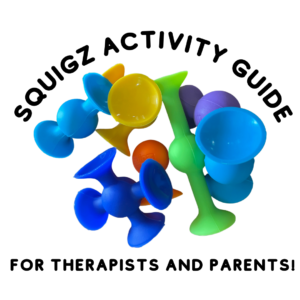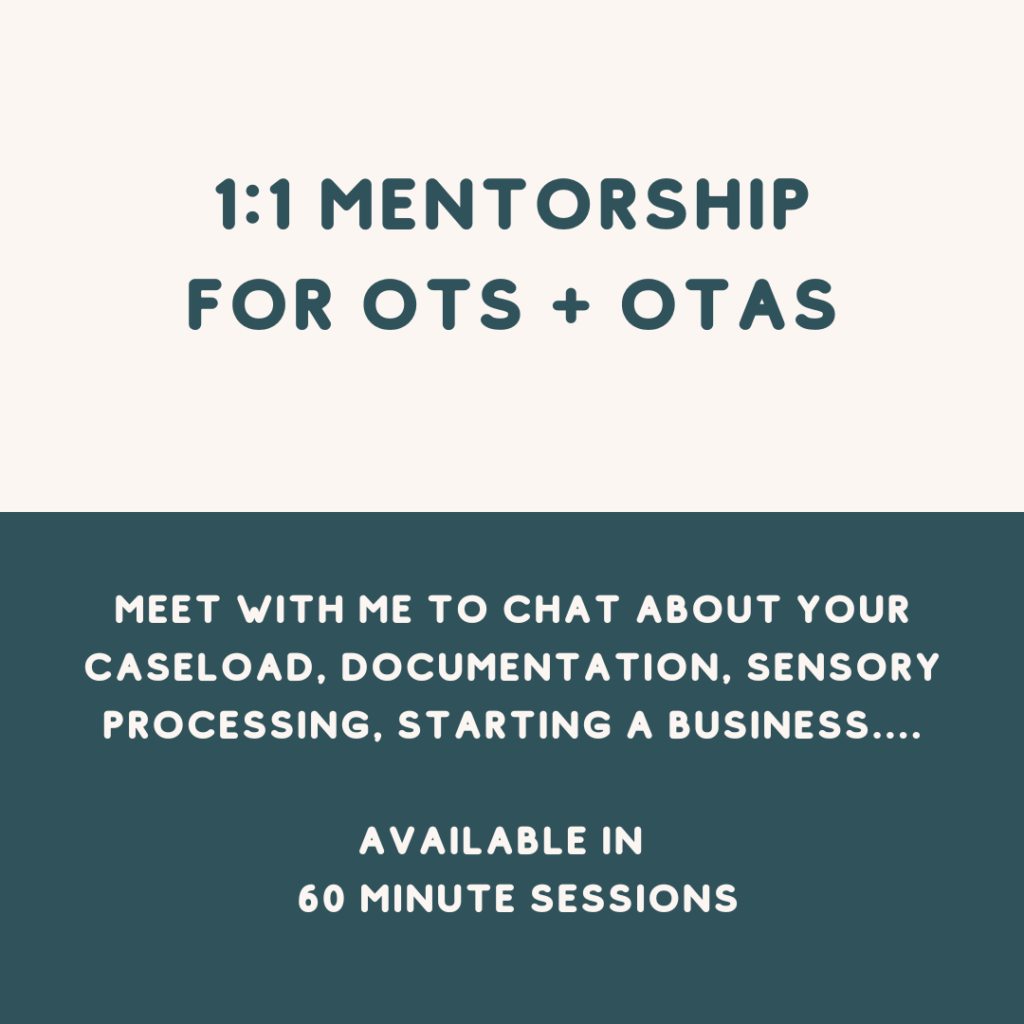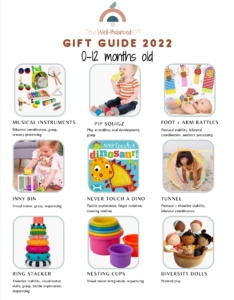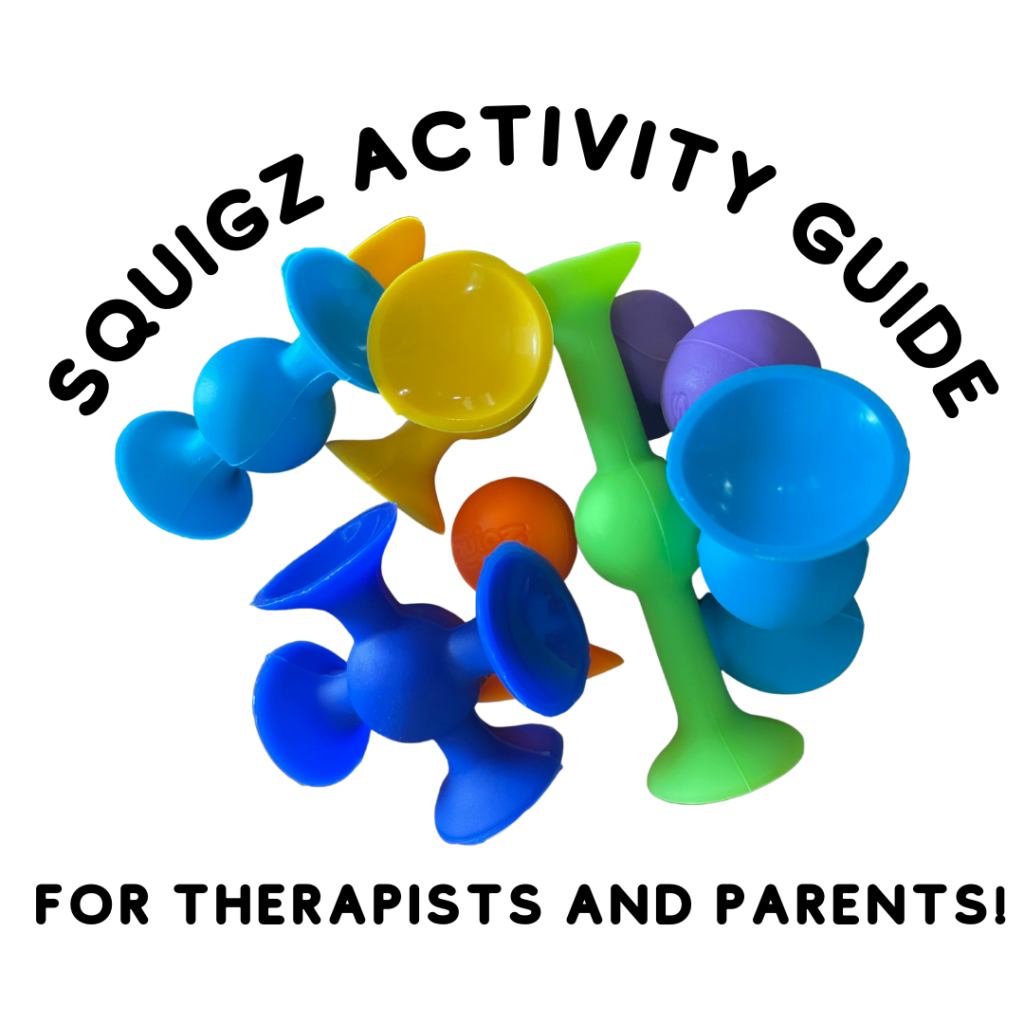
Have you heard of Squigz??? If you’re a pediatric therapist, I’m almost positive you have! They are bright-colored, suction cup toys that you can build and create with. I personally, love using them in Occupational Therapy sessions. I think they are an excellent tool that can be used for developing fine and visual motor skills, bilateral coordination, strength, motor planning, etc. Today, I’ll share some of my favorite ways to use them and this free resource that includes over 25 therapeutic ways to play with them!
Squigz for Pretend Play and Oral Motor Skills
Let’s start with one of the activities we can do with our younger kids. I have the child push the Squigz onto the table, pretending we are adding candles to a cake. You can fully play this up! Maybe you make a cake with playdoh and they push the “candle” into the playdoh. Then, place those fuzzy little craft pom poms on top of the candle to pretend it’s the flame. Get ready to sing Happy Birthday over and over again! Every time we sing, we blow the candles out.
Let’s break down all the skills we are working on:
- Making a cake with playdoh can work on fine motor control, tactile processing, and pretend play.
- Pushing the Squigz into the table or playdoh is providing proprioceptive input and strengthening the shoulder girdle
- Picking up and placing the pom poms is working on grasp skills and visual motor skills
- Singing works on communication, imitation, and shared attention
- Blowing out the candles works on regulation, breath control, oral motor skills (rounding the mouth), and teaches them how to blow.
Squigz Activity for Postural Stability
You will need a few things for this next activity: Squigz, a yoga or peanut ball, and either a whiteboard or a wall that the Squigz will stick to. As you may know, Squigz don’t stick to everything. The surface needs to be non-porous for the suction cups to stick. We’ll have the child sit on the ball, making sure their feet touch the ground. Place some Squigz by their feet. The whiteboard or wall should be about ½’-1’ behind the ball. Encourage the child to bend forward to retrieve a Squigz. Then they will sit up, then lean back over the ball (going into inversion) to place the Squigz on the board. To make this one step harder, you can draw circles on the whiteboard that indicates where the Squigz should be placed.
Here’s what it’s working on:
- Sitting on the ball requires postural stability and strengthens both the extensor and flexor muscles
- This activates the vestibular system with the change in head positioning
- Can encourage crossing midline, depending on where the Squigz are placed
- Placing the Squigz on the board facilitates the proprioceptive system
- Placing the Squigz inside the drawn circles on the whiteboard facilitates visual motor integration and ocular motor skills.
Squigz Activity for Visual Motor Skills
This activity is super simple and very fun! Suction two tall Squigz to a table, about 6” apart to create a goal. How far you place them from where the child is sitting will depend on the skill of the child. This may change a few times during the activity. Have the child crumple up a strip of paper (can be anything: scrap, tissue, construction, or printer paper) to make a soccer ball. If you want to make it even harder, have them only use one hand to crumple it. Once the ball is made they will use their thumb and index finger to flick the ball into the goal.
This works on:
- Aiming at the goal works on visual motor skills and ocular motor skills
- Crumpling the paper works on hand strength and finger dexterity
- Flicking the ball works on finger isolation and finger dexterity.
Squigz Activity for Body Awareness
This activity was suggested by one of the therapist in my mentoring group for pediatric OTs and I loved it. It’s kind of a cross between Simon Says and Twister. All you need are Squigz, a table, and the child. Have the child stand in front of you, holding two different colored Squigz in their hands. Provide verbal direction: Red Squigz touches your left knee. Blue Squigz touches your right foot. Both Squigz touch your head. This could go on forever!
This works on:
- Cross-body movements facilitate crossing midline and bilateral coordination
- Following verbal direction works on auditory processing and motor planning
- The entire activity works on body awareness and left/right discrimination
Squigz are just one of those magical toys that kids are drawn to, which makes them great to use in therapy sessions. Kids feel like they are playing and we feel like we are working towards our goals. You can download the full Activity Guide here.
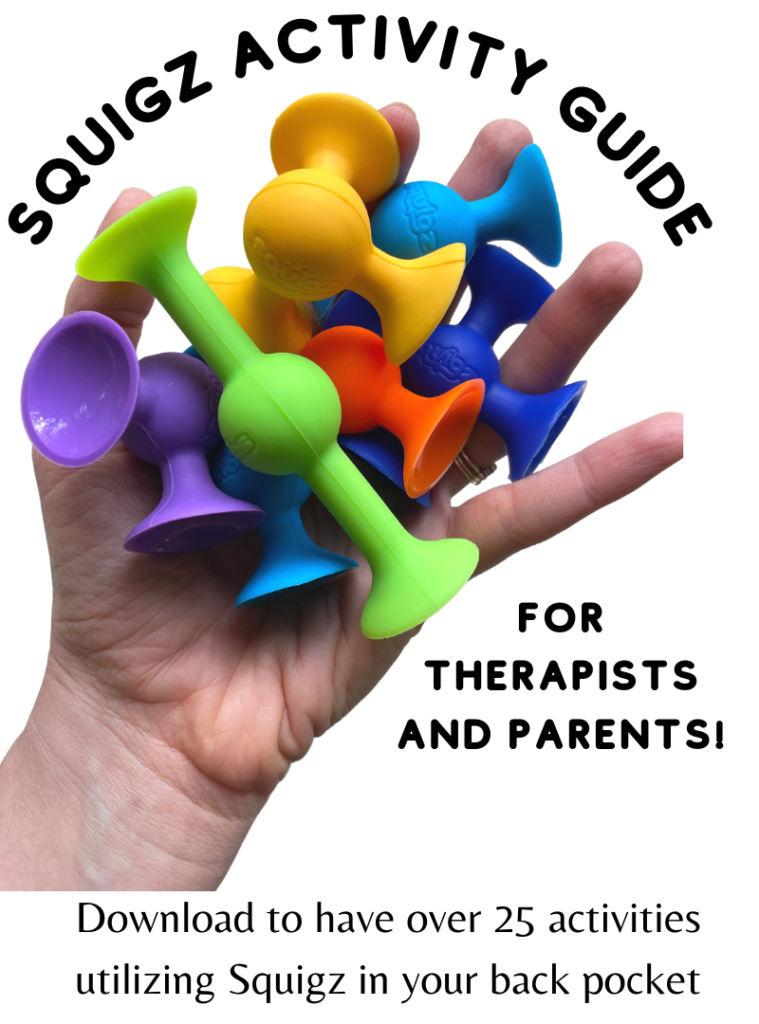
And if this was helpful for you, make sure to check out some of the other Activity Shares that I’ve done on Instagram


If you’re a therapist looking for more support, I provide 1:1 and group mentorship for OTs!

